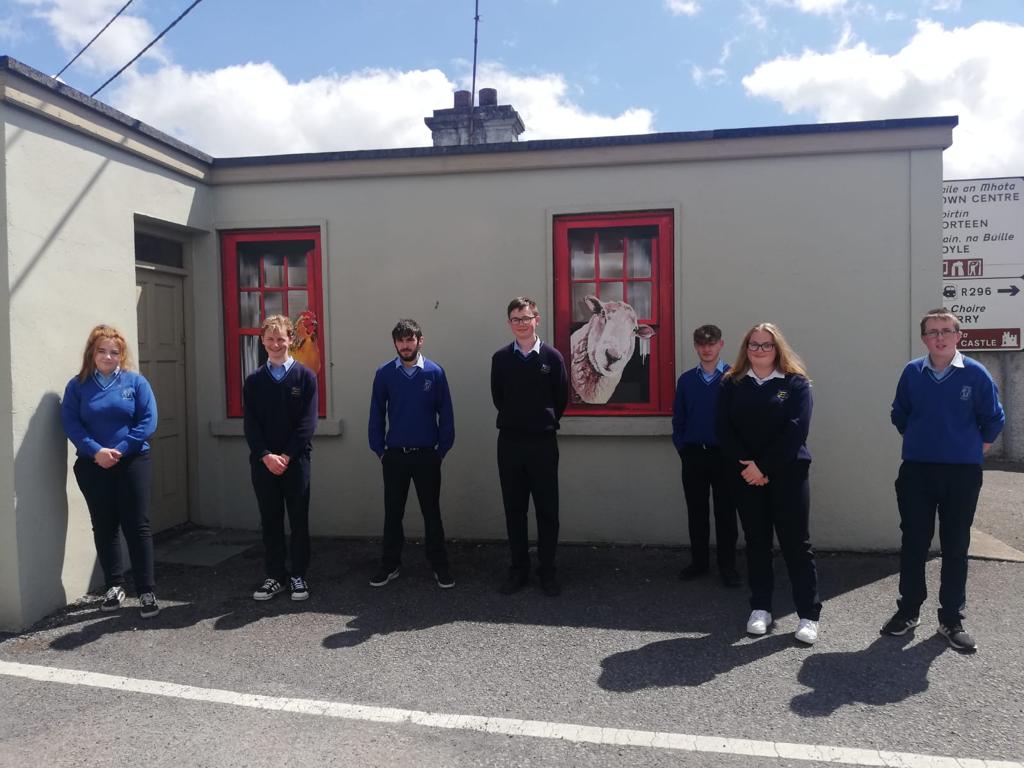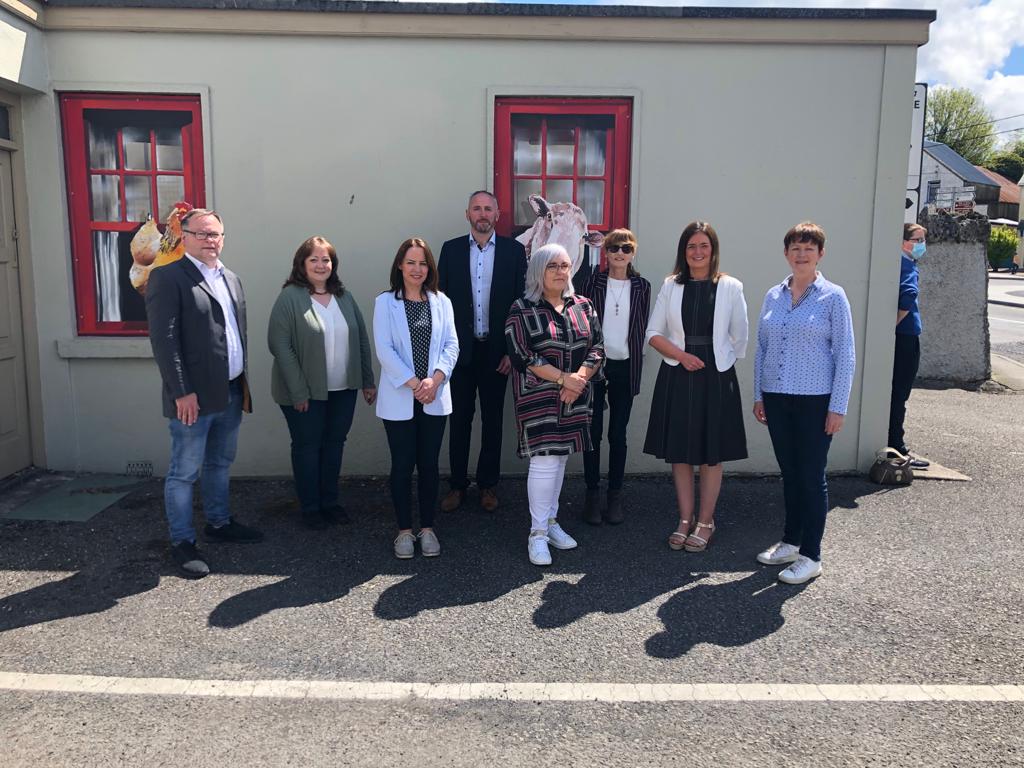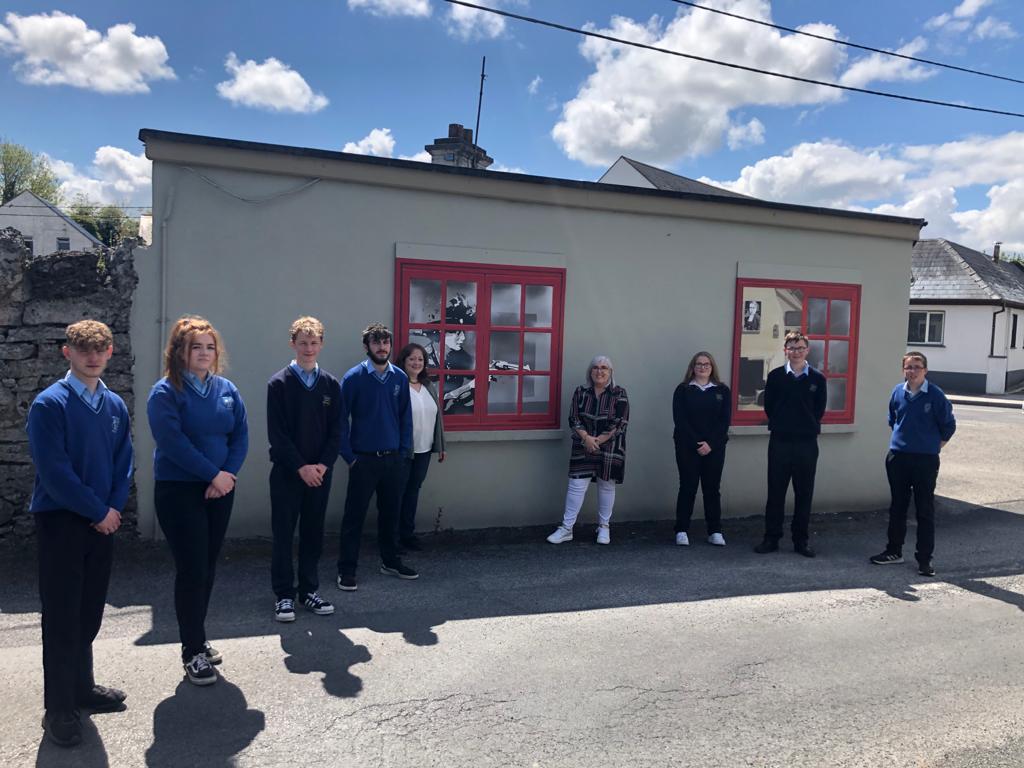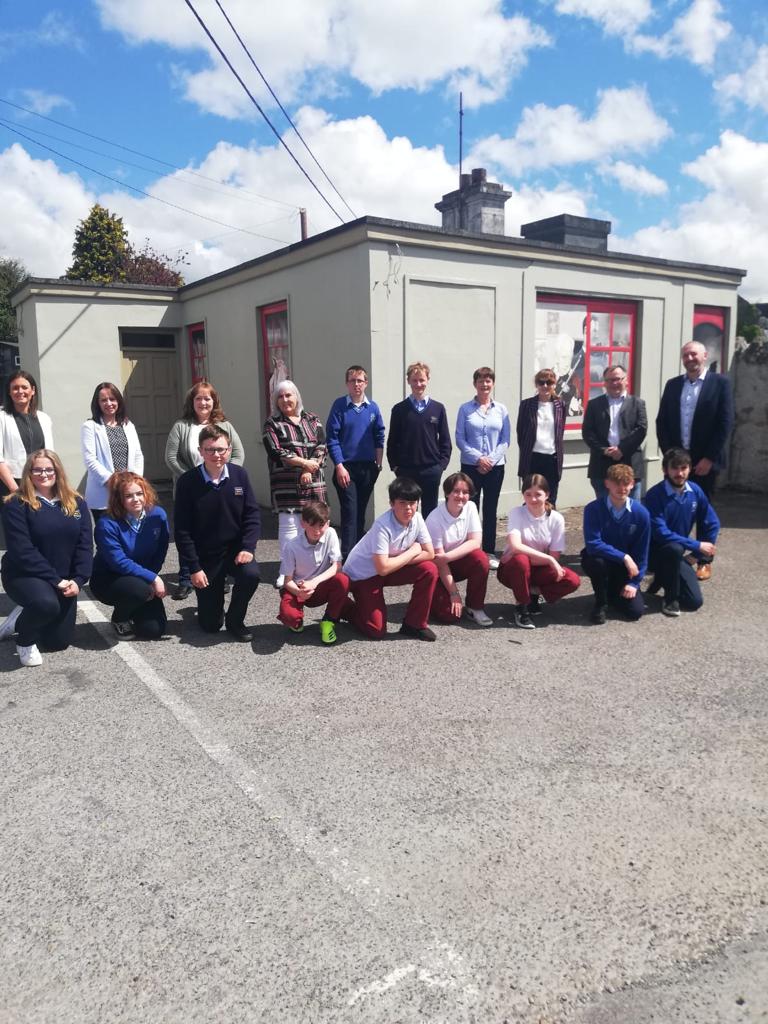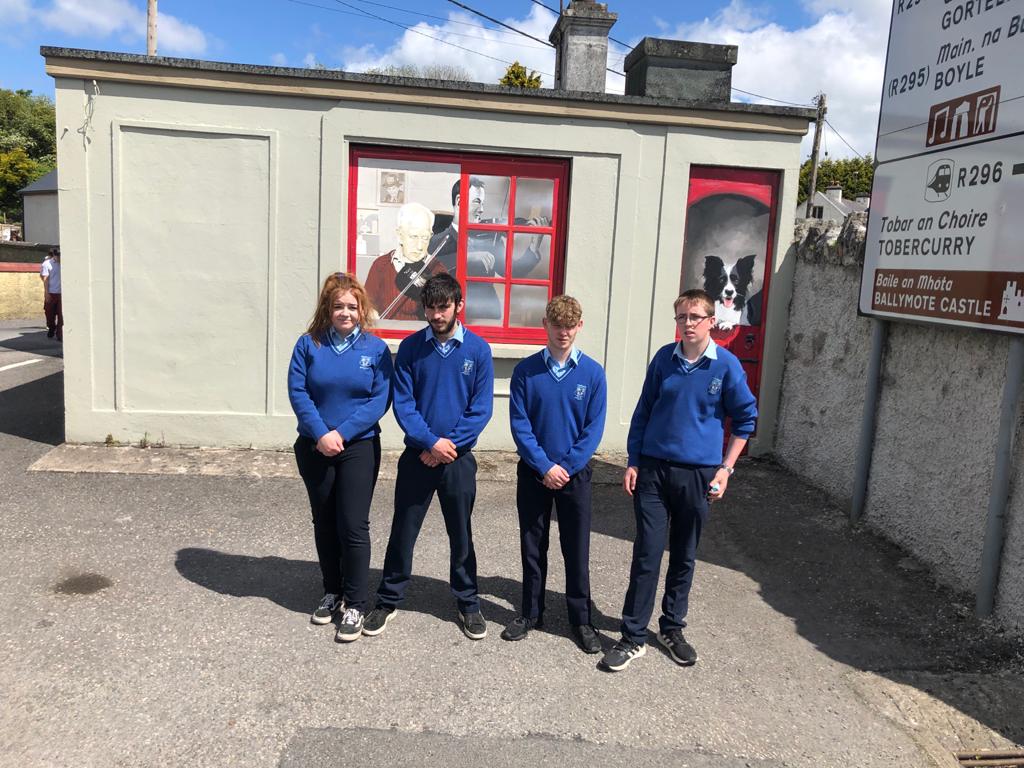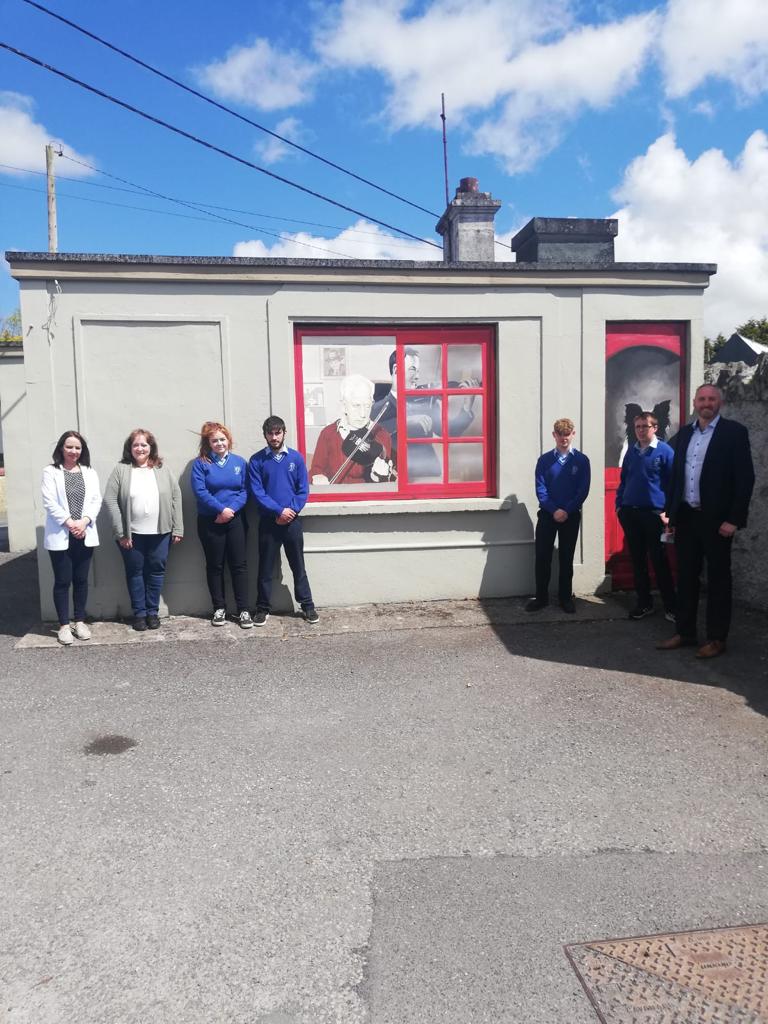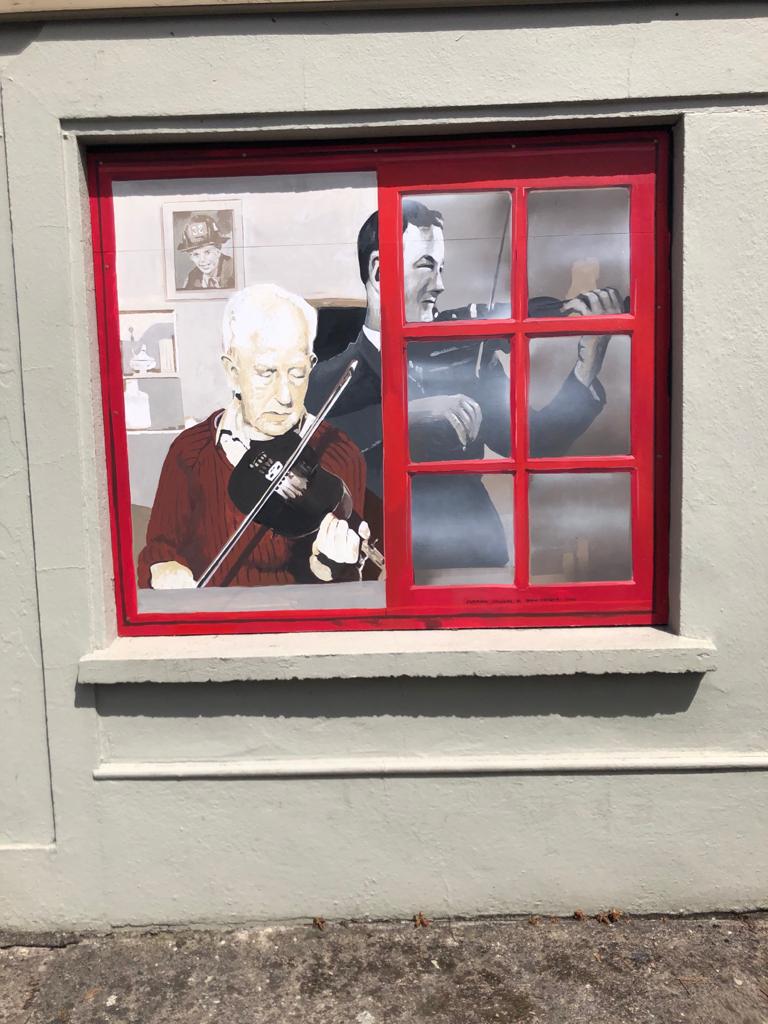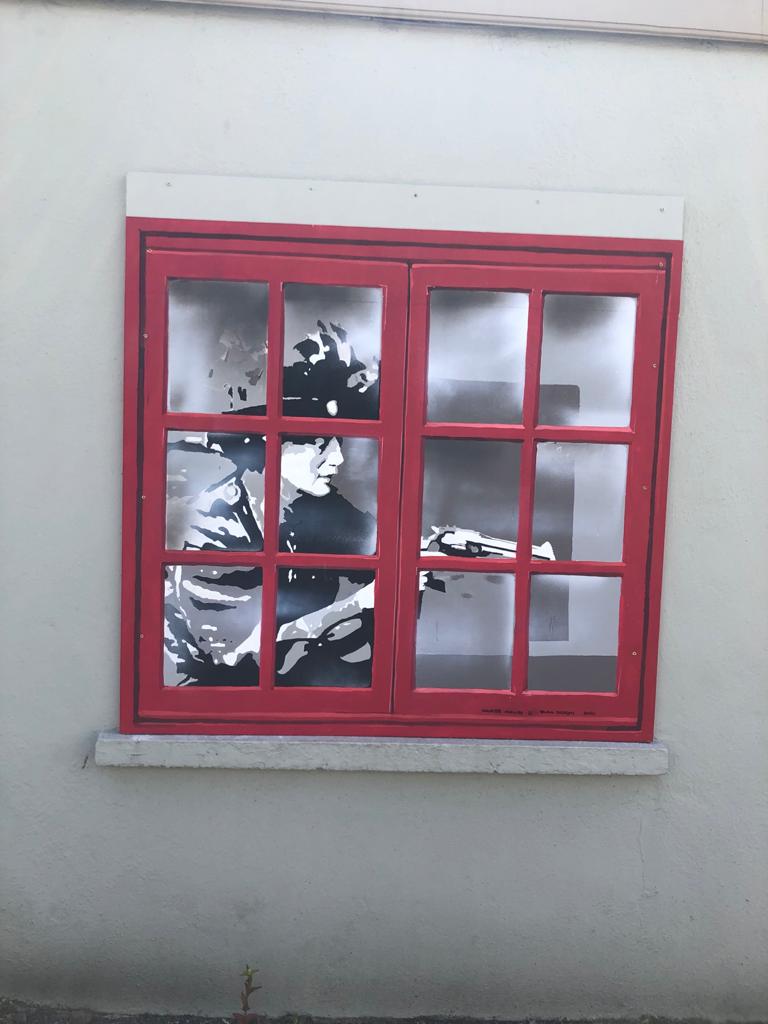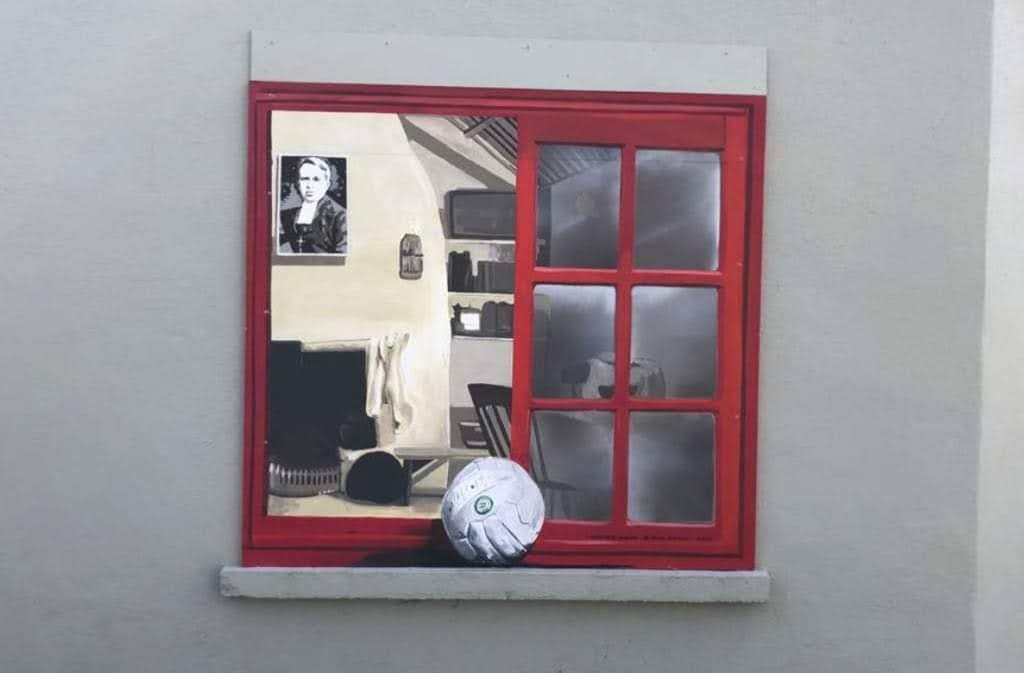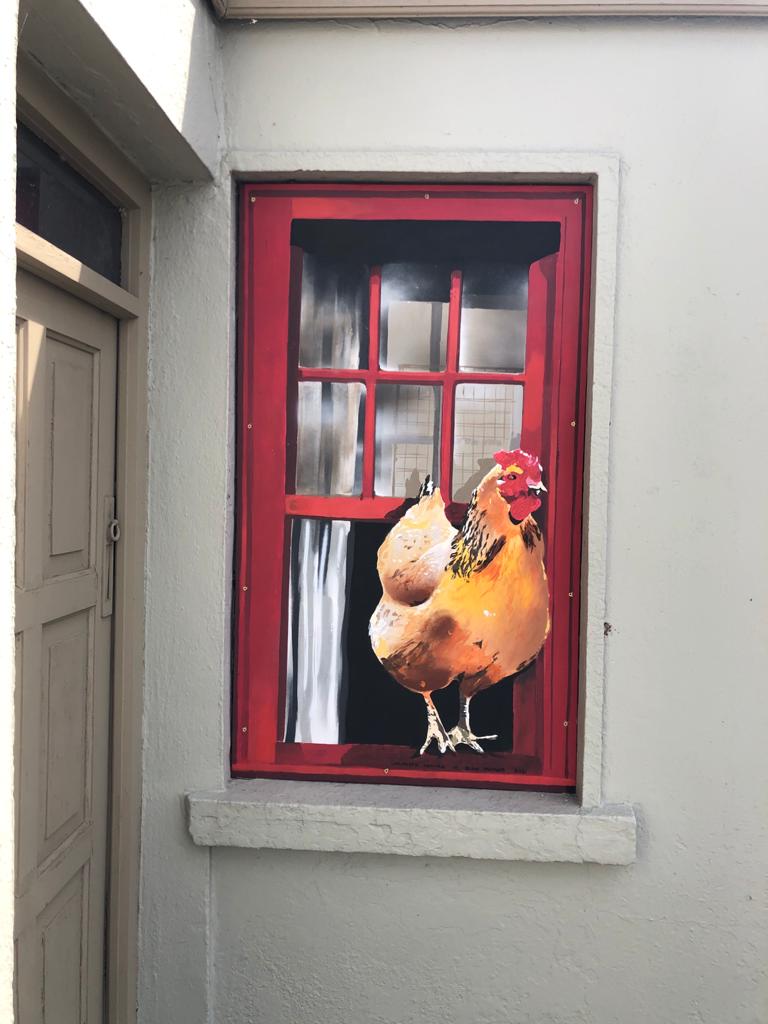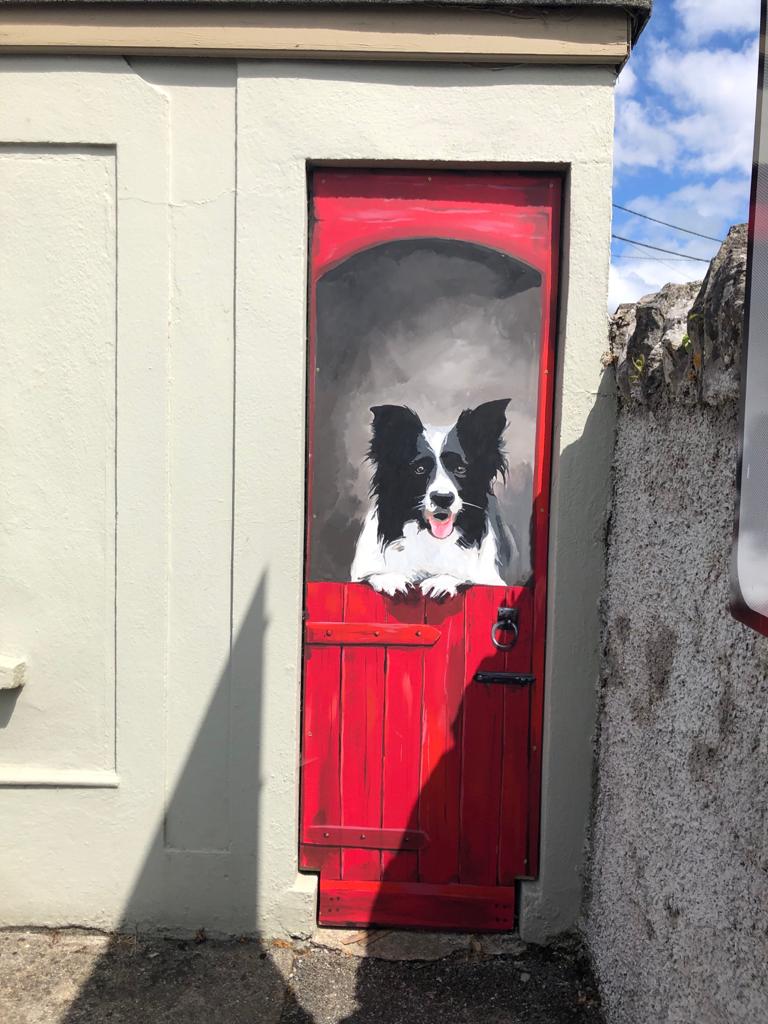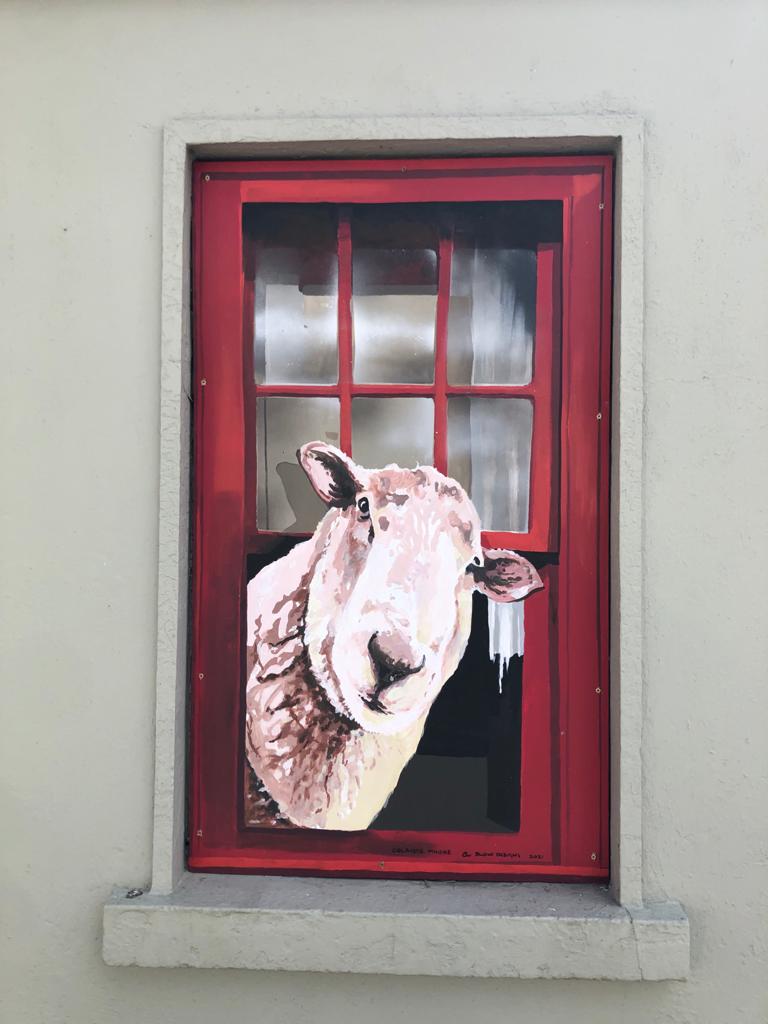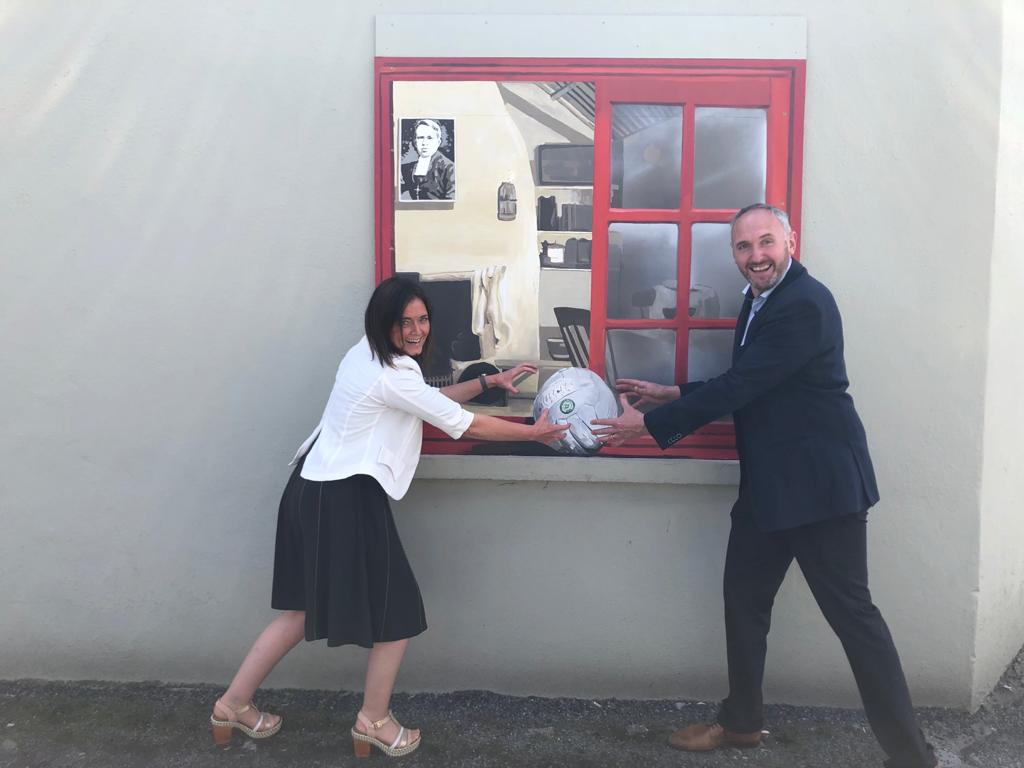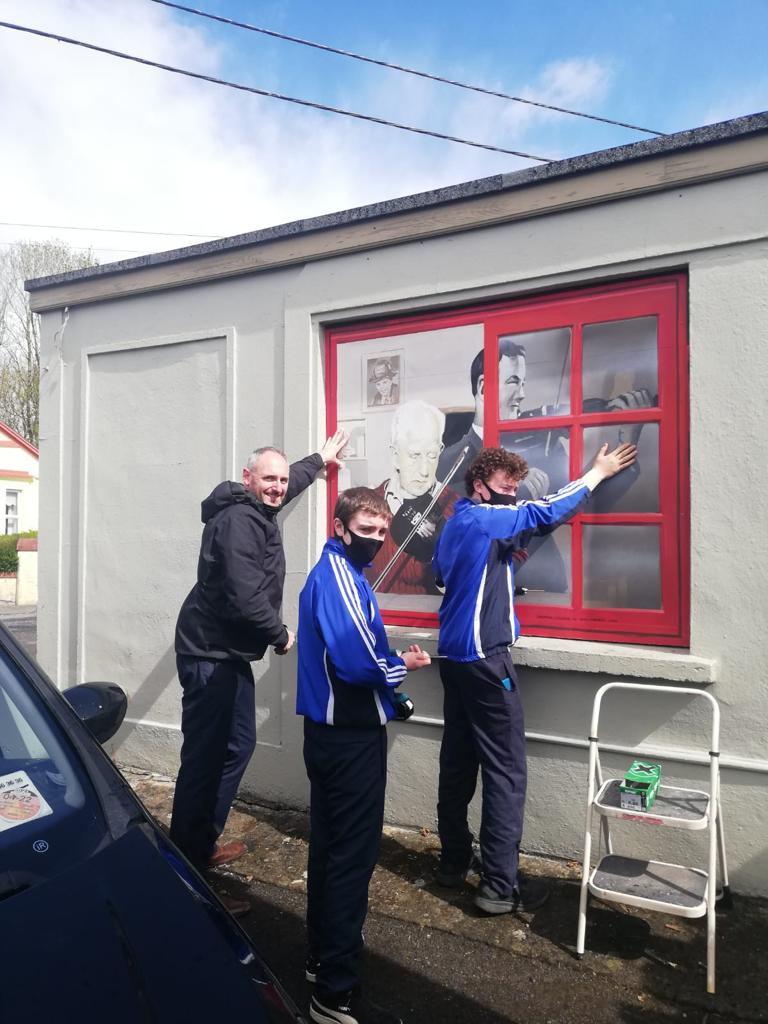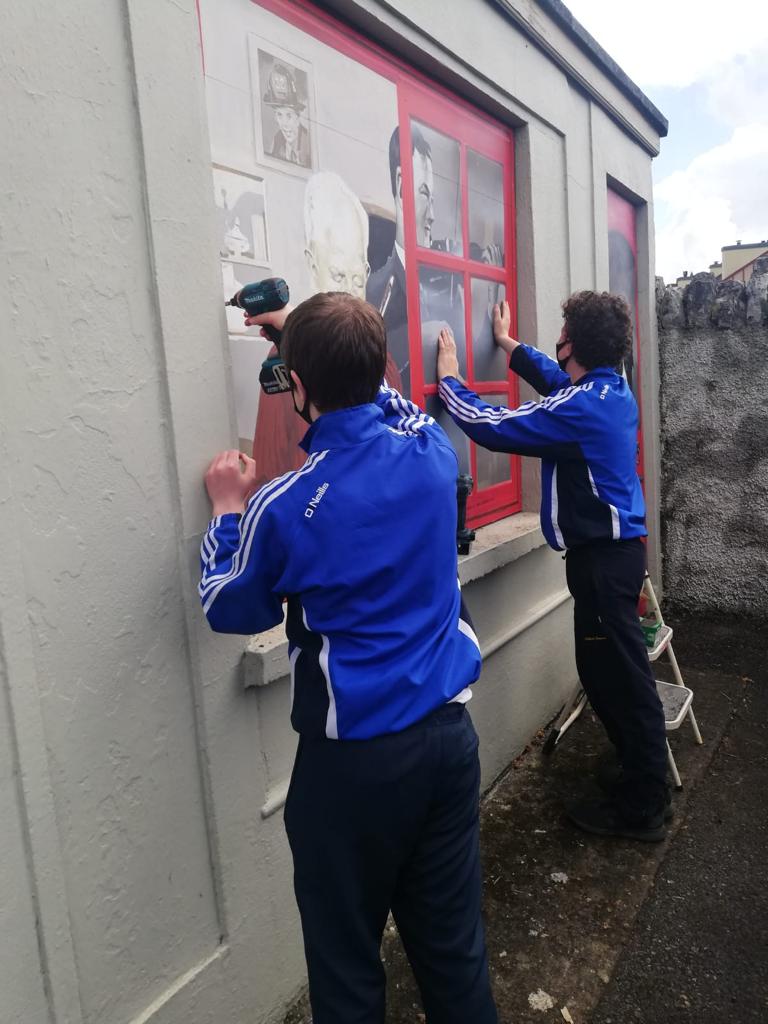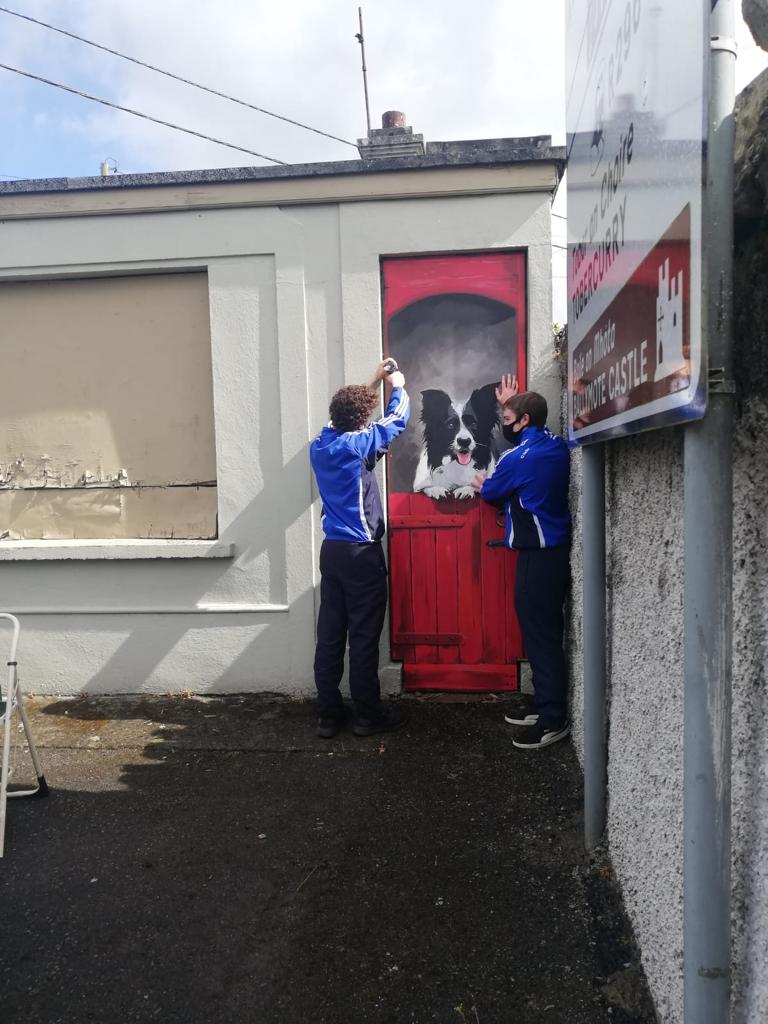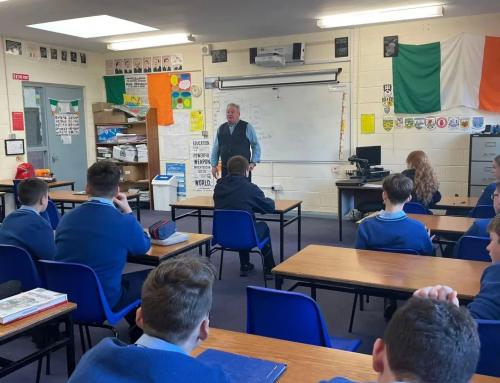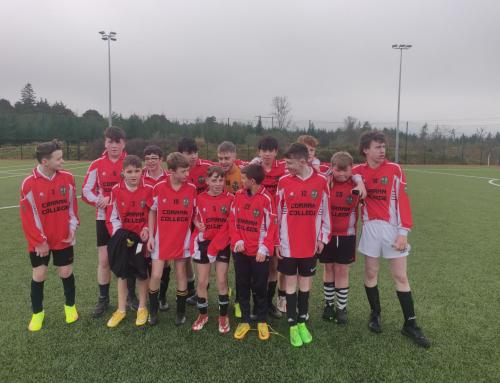Wednesday 26th May 2021 saw the launch of the first ever Creative Cluster school’s project for Ballymote entitled ‘Ballymote – A History through Art’. The Creative Cluster is funded through Sligo & Tralee Education Centres in conjunction with the Schools’ Excellence fund. Coláiste Muire as the lead school were delighted when their neighbours Corran College and Scoil Muire gan Smál joined the team. The Cluster encompasses the TY students at Coláiste Muire, the LCA students at Corran College and the 6th class pupils at Scoil Muire gan Smál along with their teachers, Ms. Oona McGrath, Ms. Colleen Quinn, Ms. Judith Bailey and Ms. Patricia Hunt, Deputy Principal, Corran College, Mr. Thomas Coggins and Principal, Coláiste Muire, Michelle McDermott.
The project began with the exploration of different aspects of Ballymote’s history. Martin Curley, historian and genealogist, who has been visiting the schools and working with students for many years, spent a number of days with the students in each school researching the elements of history that the students were interested in from a local perspective. Once the research was completed and written up, renowned Sligo artist Nik Purdy joined both the students in Corran College and Coláiste Muire to take the research and depict it onto mural. While the secondary school students had been working away on the murals, the primary school students, along with their teacher Patricia Hunt, having also worked with Martin in researching the history of Ballymote, worked with Mary Smith, animator, to transfer their newly acquired knowledge into animation.
Our murals were fitted on Tuesday courtesy of Thomas Coggins, Deputy Principal Corran College, John Gardiner, caretaker and the LCA students.
The murals depict scenes mirroring local historical figures and events.
Paddy Killoran
Mural 1 depicts a musician whose playing is influenced by the legendary fiddle player Paddy Killoran, seen in the black and white image. The colour contrast suggests the passing on through generations of the South Sligo style for which he was renowned.
Paddy was a native of Emlaghgissan, Ballymote. He emigrated to NY in 1925 and is regarded as one of the finest exponents of the South Sligo fiddle style in the “golden age” of the ethnic recording industry of the 1930s and 1940s there.
His many recordings have left a lasting legacy. The annual Paddy Killoran Trad Festival is organised by the Ballymote Branch of Comhaltas Ceoltóirí Éireann which was formed in November 1956. In 2012 the branch name was changed to Craobh Paddy Killoran.
On the wall just beside the hearth of the house is a picture of NYFD Fire Fighter Michael Francis Lynch whose mother Elizabeth McCarrick was from Carnaleck, Cloonacool. Michael was one of 343 NYFD staff who died on 9/11
He was last seen entering WTC Building 4 at the corner of Church and Liberty Streets in lower Manhattan, going down the stairs, presumably toward Tower 2 just before the collapse. A charitable foundation was set up by the family in the aftermath of his death to provide higher educational opportunities to the children of firefighters and other victims of 9/11.
Our diaspora have made tremendous contributions to their new communities and this mural acknowledges their legacy and sacrifice
Countess Markievicz
Mural 2 shows Constance Gore Booth, Countess Markievicz, in her Citizen’s Army uniform. The only woman leader in 1916 she was saved from execution. She was the first woman elected to the Westminster Parliament in 1918, and was elected Minister for Labour in the First Dáil in 1919, becoming the first female cabinet minister in Europe.
The Gore Booths owned Ballymote for much of the 19th century having bought the property from the FitzMaurices who had bought it from the Taafes. In 1909 Countess Markievicz’s brother Jocelyn put in place plans to sell the town holdings to the tenants.
Constance’s politics were influenced by her father, Sir Henry, who provided free food for the tenants on his estate at Lissadell during the Famine of 1879/80. Their father’s example inspired in Gore-Booth and her younger sister, Eva Gore-Booth, a deep concern for working people and the poor. The sisters were childhood friends of the poet W. B. Yeats, who frequently visited the family home Lissadell House, and were influenced by his artistic and political ideas. Yeats wrote a poem, “In Memory of Eva Gore-Booth and Con Markiewicz”, in which he described the sisters as “two girls in silk kimono, both beautiful, one a gazelle” (the gazelle being Constance).
Br Walfrid
Mural 3 depicts a football with the logo of Glasgow Celtic FC with a picture over the fireplace of Glasgow Celtic founder Br Walfrid, born Andrew Kerins in 1840 near Ballymote.
Andrew Kerins emigrated to Glasgow where in 1864 he joined the Marist Brothers, a Catholic religious order dedicated to educating the young, especially the poor. Once he was trained he took the name Brother Walfrid and was sent to teach in the city’s East End, a poor area where many Irish immigrants had settled. Poverty, hunger and disease were rife among the poor of his area, most Irish emigrants. This prompted Walfrid to establish “penny dinner” tables to ensure that the children would get at least one meal a day. He raised money for his initiatives through charity football matches and in November 1887 Celtic Football and Athletic Club was founded in St Mary’s Church Hall in Calton to raise money for deserving children. It has gone on to become Scotland’s most successful club.
Farm Animals
Mural 4, 5 and 6 are an homage to the animals both farm and domestic that have sustained the area over the generations. The Fair in Ballymote preceded the establishment of the modern town under Thomas Fitzmaurice in the 1770s and was a great economic benefit to all. Special trains were run in order to transport the cattle, sheep, horses and pigs sold in the Fair so that it gained a national reputation and also brought in buyers from England. The rearing of chickens supplied a thriving egg industry which again used the railways to export especially to Liverpool.
Our schools welcomed local support from Marguerite Egan and the tidy towns committee who worked with us to source a location for the murals. Sincere thanks to Angela at Sligo Education Centre for her support in the administration of the project and to our Creative Cluster Associate, Leslie Ryan, who provided us with countless Zoom sessions, advice and patience.
Creative Cluster is a two year project and we look forward to working in collaboration again from September. We are hoping to get the opportunity to get our students collaborating and working together in person. We are very grateful to provide such a wonderful educational and enjoyable opportunity to our students to build their sense of creativity, research ability, team work skills and communication skills.
Finally, we hope that the residents, community and visitors of Ballymote will be proud of the work we have done and will enjoy it for years to come!

